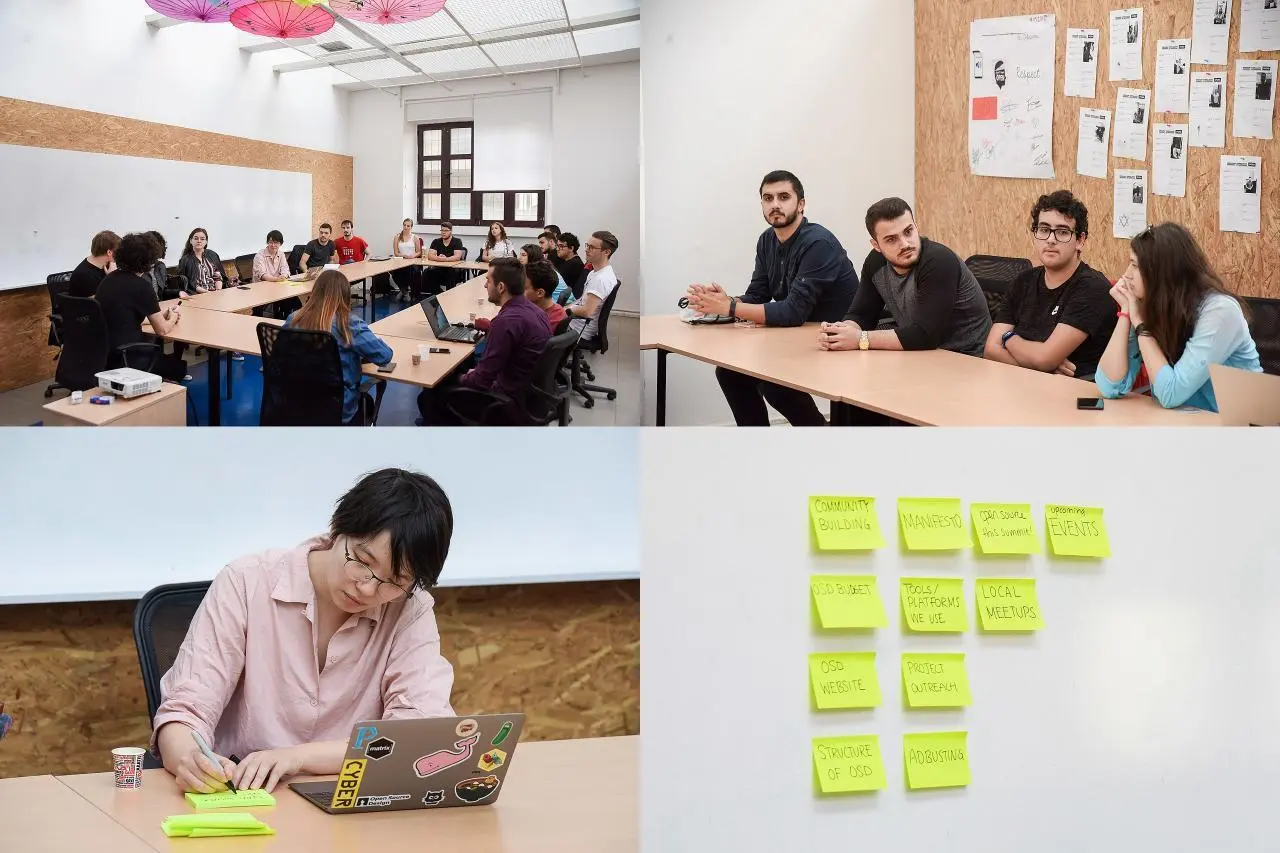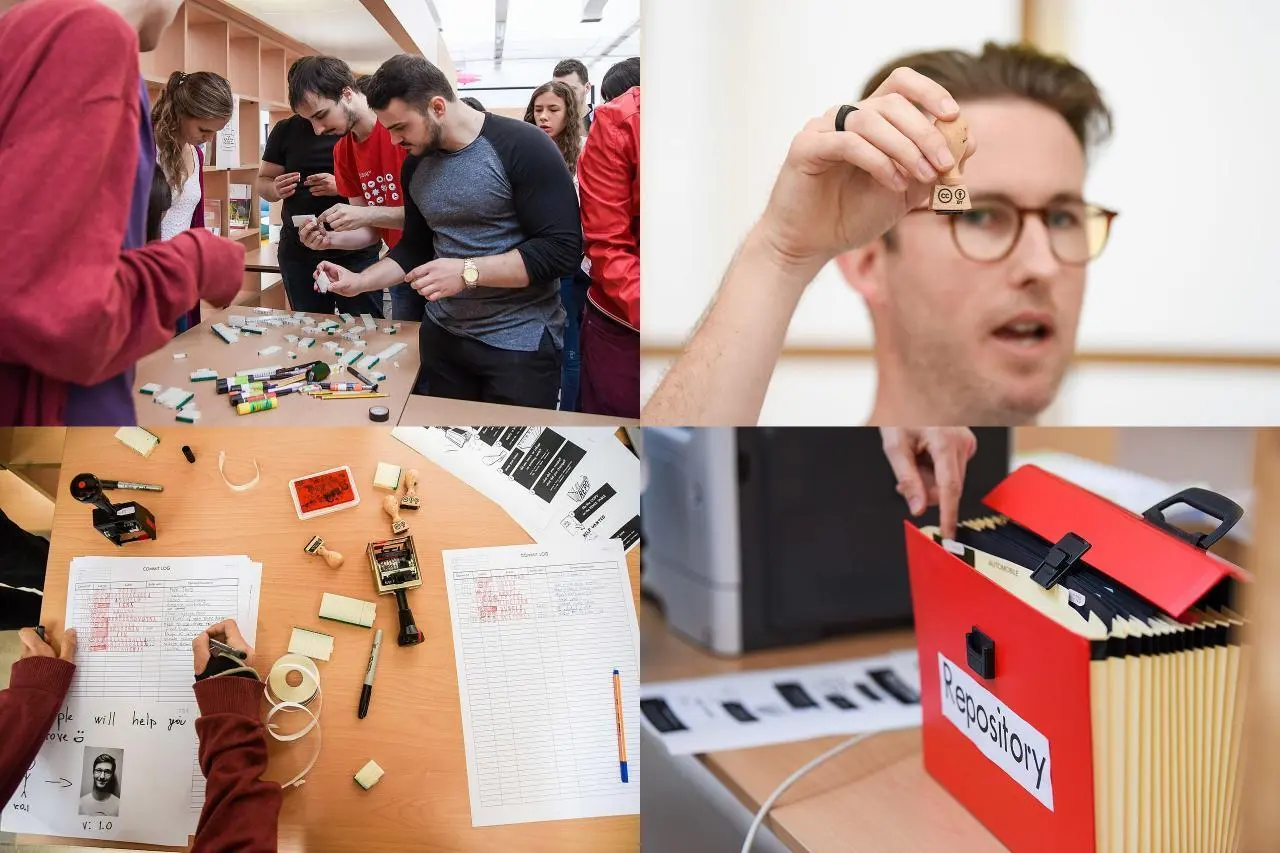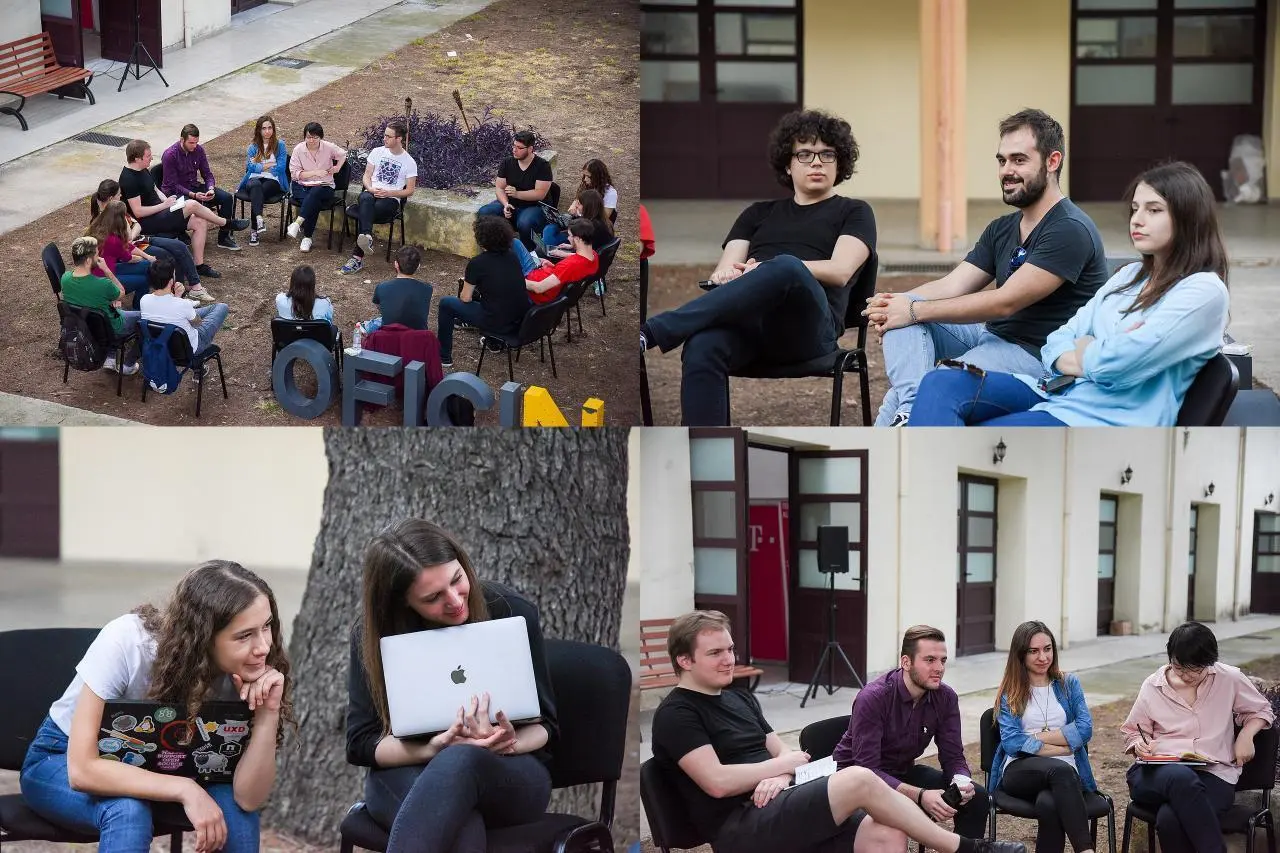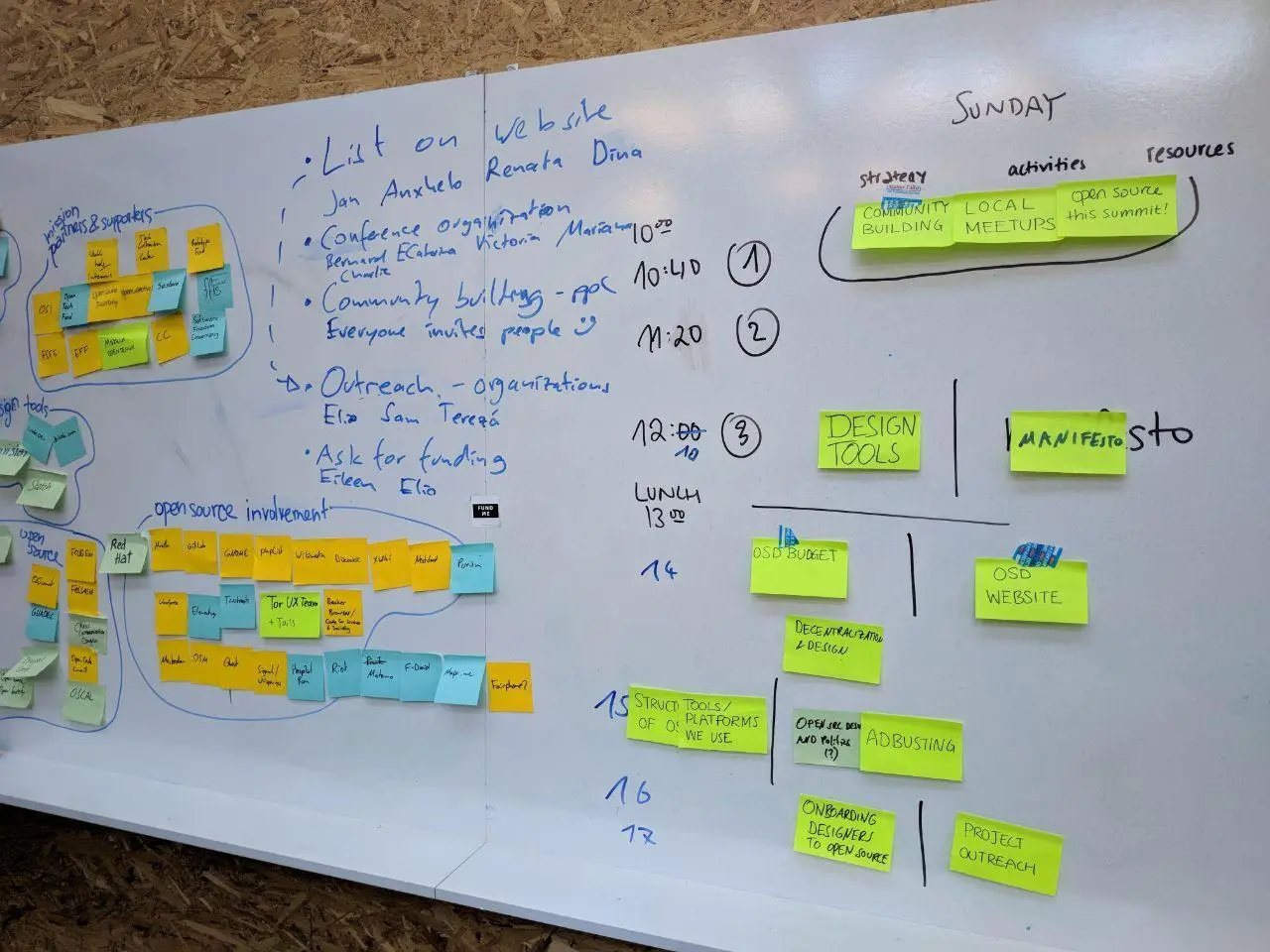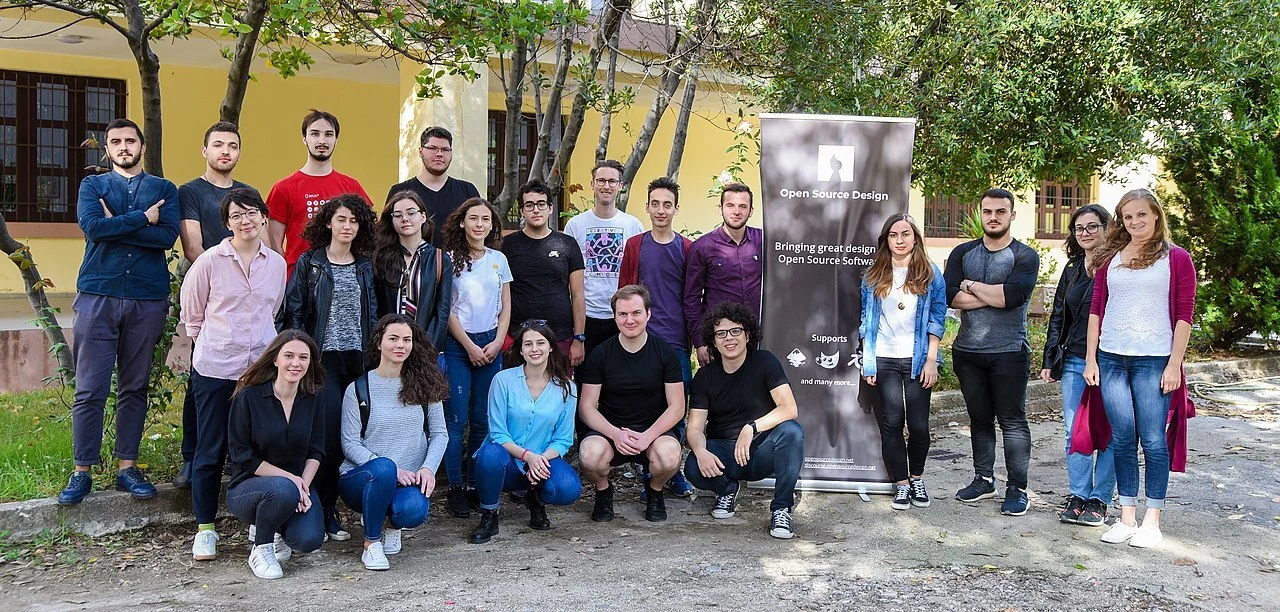Open Source Design Summit Tirana
During the first weekend of November (from 2-4 November) I had the opportunity and the pleasure to organize and be part of the 2nd edition of the Open Source Design Summit, this time happening in Tirana, Albania.
Open Source Design is a community of designers and developers pushing more open design processes and improving the user experience and interface design of open source software. The community writes articles, runs a job board, puts on events, provides resources, and presents talks targeted at developers and designers interested in working and designing in Open Source.

Open Source Design Summit itself is an yearly event where designers, developers and more join to discuss about the issues of Open Design and how to improve our involvement in projects, provide better design and feedback, use better tools, ways of communicating and sharing with people etc.
Together with the Open Source Design community a few months ago we at Ura Design initiated the discussion on the Open Source Design organization repo on GitHub for the location of the upcoming Summit and proposed Tirana. The discussion kept going for quite some months and the members of the community chimed in and gave their opinion. We had discussions with the OSD members during the following months regarding the final details on monthly calls and Discourse.
I was pretty excited to help with the organization of this edition as I feel myself much a part of this movement as I use only free and open source tools on my design workflow such as GIMP, Inkscape, Krita, Blender and many more.
Below you’ll find a more detailed storyline of the entire event and my opinions on what went good/bad and what to improve for the next edition.
The full story
November 2nd (opening)
This edition of the Summit started on the Friday of November 2nd in the afternoon with a reception gathering at Ofiçina, the venue for the Summit. Some of the participants had arrived a day earlier (Thursday) or in the Friday morning, but unfortunately I (well, all of us really) was busy with the organization of the event so I couldn’t meet up for food/drinks with the guests, so that sucked a bit. Being in Albania, things are usually done last minute (blame our mentality and for almost never being on time) and so were most of the preparations.
This was not a big problem anyway, because the OSD Summit is not the classic big conference with parallel sessions and workshops but more of a collective or a small unconference.
I met with many old friends and some new ones from countries as far away as New Zealand, Czech Republic, Germany, Kosovo etc.
As it was the opening day, there weren’t many participants (about 12 in total) but that was enough for us to start a “round table of chairs” (with good chill music in the background, sponsored by my Bluetooth speaker 😂 and a nice space outside) where everyone would introduce themselves, what they do, what projects they contribute to, why they were attending the summit and more.
After this round of intros, we began compiling the agenda (mostly a draft) entirely onsite with all the attendees proposing the topics they wanted to discuss during the event over a beer. As the time had changed, it was already dark at 5 PM, so it was a bit difficult to differentiate between us. Note for next time, add more lights if the gathering is done outside.
Next up was dinner, we decided to eat at our usual restaurant of choice, Mystic (we always bring our guests there, the food is quite affordable and tasty; and no, this is not an advertisement, I just happen to like the food there).
November 3rd (first day)
The following Saturday morning (officially the 1st day of the Summit) started with new energies. The event started at 10.00 AM at Ofiçina and we started discussing on the topics we proposed the previous day and preparing a more curated agenda for the day.
We officially started the Summit by welcoming everyone by giving an intro to Open Source Design for newcomers that decided to join us in the Summit, following up with a short talk by David and Teresa from Red Hat about Design Systems, and specifically about PatternFly.
Next up we had a very interesting and involving workshop about Cut, Copy & Paste from Sam. The workshop was there to teach beginners about the concept of git as a version control system (as designers usually have to work with git too, which is a showstopper for many at first). Thanks a lot Sam, it was a total blast!
After the workshop, we had lunch at 1 PM (we had the group photo before lunch too, but not going to share now, rather let you scroll down until the end of the article, as always) and restarted the sessions at 2 PM. In the next sessions, we talked about finalizing our Manifesto, a topic we had been discussing for a long time at our Discourse forum and we think we finally have a ready-to-go version that will be published soon on the website (bravo and thanks to everyone involved).
The following topic was about our upcoming events and where should Open Source Design focus on more, a nice discussion that happened outside, in the warm weather (really, Albania is warm even in November).
The next topic was a sharing round where we shared our knowledge and skills, what we can do to help and change the current proprietary and closed-down system and provide help where it’s needed the most in open source. After, Renata of our team shared some Usability Studies we accomplished before, such as Thunderbird and I2P. Later, Sam shared some info about the issue of Diffing SVG-s and how difficult it is to process it correctly and with consistent results, because each software tries to do it in their own way.
Closing up at 5 PM, we cleaned up the place and prepared it for the next day and some of us had dinner 🍗 (traditional food at Zgara Korçare 2) and later on drinks 🍹 at Nouvelle Vague in Blloku area.
November 4th (final day)
The last day (Sunday) started as usual, but this time at 10:30 AM. This final day was mostly marketing related (in the sense that we created a huge table with data) but more busy.
We started by discussing about the Summit itself and community building (via local meetups). Then, we split into two groups, one inside and one outside. The one inside worked on finalizing the Manifesto meanwhile the one outside (which I directed) discussed about Design Tools, what each of us used, what can we use and bring new ideas into the table. This was a very important topic as we agreed that open source design tools projects need more dev feedback and also help in improving their UI/UX (most complained about GIMP and I can totally understand that).
After these sessions, we had lunch 🥗 again at 1 PM and resumed the sessions at 2 PM.
The whiteboard was filled with sticky notes 📌 and everyone brainstormed 💡 about different organizations/projects that had similar goals and intensions as Open Source Design.
We discussed about ways to build up a bugdet that Open Source Design can use to extend its activity, changes we would be doing in the Open Source Design website, such as a new theme (maybe, a bit far fetched idea though), the structure of the organisation, the platforms we would use, the politics we would follow, Adbusting, project outreach and how we could onboard new designers into the project.
Once again, we wrapped up at 5 PM and announced the Summit as over and headed for Restorant Era 2 to eat dinner and then at Komiteti to drink something traditional such as raki.
This is basically (very detailed right?) what happened during the Open Source Design Summit 2018 in Tirana, Albania. All in all, I’d consider this a successful event and hope that it has some visible effects on the organisation and the future of Open Source Design.
Oh, I almost forgot, as promised, here is the group photo 📸 from the Summit. Enjoy!
Thanks to the support from Stickermule, Mozilla, phpList, Open Tech Fund, Red Hat & Nextcloud we were able to bring the largest celebration of the Open Source Design community in the city.
All content is licensed under CC BY-NC-SA 4.0. (Attribution-NonCommercial-ShareAlike 4.0 International).
